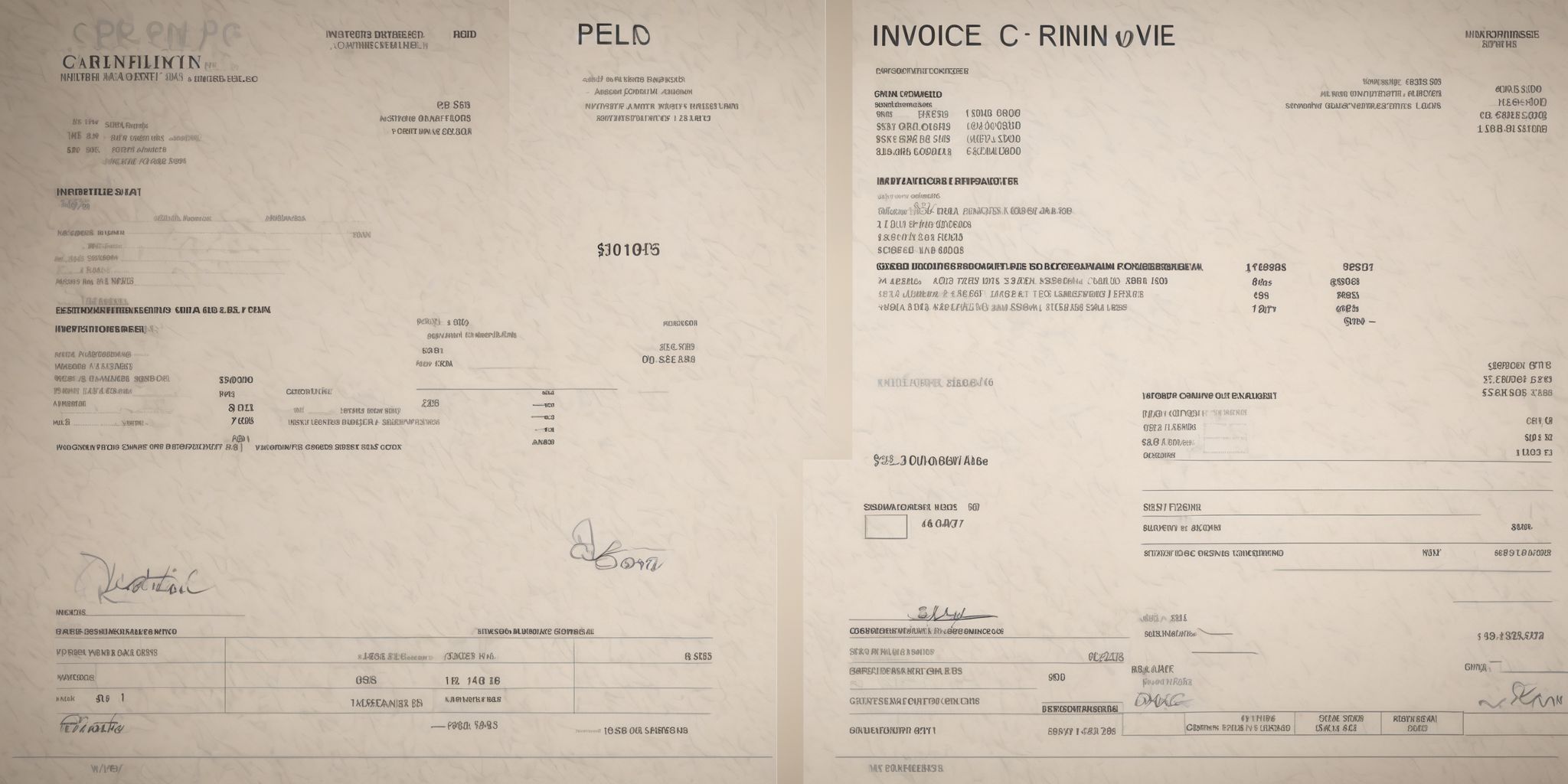Mastering Your Hedging Position: Tips for Long-Term Success
Are you someone who likes to play it safe? Or perhaps you are the type of person who is always on the lookout for ways to minimize risks and increase gains in your everyday life. Whatever the case may be, when it comes to investing, hedging your position can give you that extra sense of security that we all crave. But how do you go from being a novice to a master of hedging?
In this article, we will guide you through some essential tips and tricks to help you master your hedging position and pave the way for long-term success. So, grab a cup of coffee and get ready to dive into the world of hedging like a true pro.
Mastering Your Hedging Position: Tips for Long-Term Success
To achieve long-term success in your hedging position, it is vital to understand the significance of hedging and its role in managing risks. Start by clearly identifying the potential risks you face and assess their potential impact. Consider using various hedging instruments such as options, futures, or currency contracts to mitigate these risks effectively. Continuously monitor and regularly adjust your hedging position to align with changing market conditions.
Remember, diversification is key; hedging across multiple risks minimizes exposure and ensures a well-balanced approach. By mastering your hedging position through diligent evaluation and strategic decision-making, you can navigate uncertainties and safeguard your financial stability.
Understanding the Importance of a Hedging Position
What is a Hedging Position?
A hedging position refers to a strategic approach taken by investors or businesses to mitigate potential financial risks associated with market fluctuations. It involves opening offsetting positions in different financial instruments or markets to protect against adverse price movements. This is achieved by taking a position that is inversely correlated to an existing exposure. For example:
- A company with significant foreign currency exposure might hedge its position by entering into currency swap contracts.
- An investor concerned about a decline in the stock market may purchase put options to hedge their long stock positions.
Definition and Purpose
A hedging position refers to a strategy adopted by investors or businesses to mitigate the risks associated with price fluctuations or unexpected market movements. The purpose of a hedging position is to protect against potential losses by offsetting the impact of adverse price changes in an asset, currency, or commodity. For instance, a company that relies heavily on imported raw materials may enter into futures contracts to secure fixed prices, reducing the risk of sudden cost increases.
By establishing a hedging position, individuals and organizations can proactively manage their exposure to market volatility and safeguard their financial interests.
Real-Life Examples of Hedging Positions
Real-life companies often utilize hedging positions to mitigate risks and protect their financial stability. For instance, companies involved in international trade may use currency forwards or swaps to hedge against fluctuations in exchange rates. Similarly, oil and gas producers might employ futures contracts to safeguard against price volatility in the energy market. These practical examples highlight how businesses can strategically manage their exposure to market fluctuations through hedging instruments, minimizing potential losses and maximizing long-term success. By understanding and implementing effective hedging strategies, companies can navigate uncertain market conditions while maintaining a competitive edge.
Benefits of Having a Strong Hedging Position
- Protection against market volatility: A robust hedging position can shield businesses from unexpected shifts in prices, currencies, or interest rates. For instance, a company that imports goods from foreign markets can use hedging instruments to lock in favorable exchange rates and mitigate the risk of currency fluctuations.
- Increased financial stability: By hedging their positions, businesses can minimize the impact of adverse market conditions. This, in turn, helps to maintain stability in cash flow, profitability, and overall financial performance.
- Enhanced risk management: Hedging allows businesses to proactively manage and control their exposure to various risks, such as commodity price fluctuations or interest rate changes. By effectively hedging their positions, organizations can reduce the potential negative impacts of these risks and improve their overall risk management strategies.
Protection against Market Volatility
A strong hedging position provides protection against market volatility, reducing the impact of sudden price fluctuations. By hedging positions, investors and businesses can mitigate potential losses and stabilize their financial positions.
For example, a company exporting goods may hedge its foreign currency exposure by entering into forward contracts. This allows them to lock in a specific exchange rate, shielding them from adverse currency movements.
Similarly, investors can hedge their stock portfolios by purchasing put options. These options provide the right to sell stocks at a predetermined price, acting as a safeguard against market downturns.
It's crucial to carefully analyze market conditions and identify potential risks to determine suitable hedging instruments for protecting against market volatility.
Increased Financial Stability
Building a strong hedging position is instrumental in achieving increased financial stability. By hedging against market risks, companies can mitigate potential losses and protect their bottom line. A well-managed hedging position enables businesses to stabilize cash flows, safeguard profit margins, and reduce exposure to adverse market movements.
For example, a manufacturing company that hedges against fluctuations in commodity prices can ensure consistent production costs and avoid sudden financial shocks. This stability allows for better long-term planning, investment decisions, and overall financial resilience. Implementing effective hedging strategies contributes to the stability and sustainability of a company's financial position.
Enhanced Risk Management
Enhanced risk management is a fundamental aspect of a successful hedging position. By effectively managing risks, businesses can mitigate potential losses and protect their financial stability. One way to enhance risk management is by diversifying hedging instruments and strategies to spread risk across multiple areas.
For example, using a combination of options, futures, and swaps can provide a well-rounded approach to risk mitigation.
Additionally, setting clear risk limits and regularly monitoring and adjusting the hedging position can ensure its effectiveness. By implementing these risk management practices, businesses can navigate uncertainties and optimize their long-term hedging strategy.
Developing an Effective Hedging Strategy
Identify and Assess Your Risks
To effectively manage your hedging position, start by identifying and assessing your risks. Understand the potential exposures and vulnerabilities your business faces. This includes analyzing market trends, pricing fluctuations, currency risks, and interest rate fluctuations. By quantifying the level of risk each factor poses, you can make informed decisions about which hedging instruments to utilize.
For example, if your company imports goods from overseas, closely monitoring currency exchange rates becomes crucial. Assessing your risks allows you to prioritize and allocate resources effectively, ensuring your hedging position is tailored to mitigate the specific risks your business faces.
Understanding Exposure and Vulnerabilities
Understanding exposure and vulnerabilities is an integral part of mastering your hedging position. By identifying and assessing the risks associated with your investments, you can make informed decisions to hedge against potential losses. Exposure refers to the extent to which your assets are susceptible to fluctuations in the market. By evaluating exposure across different financial instruments and markets, you can determine the most effective hedging strategies.
For example, if you hold a significant amount of foreign currency, you may be exposed to currency exchange rate risk. Hedging against this risk can involve utilizing currency futures or options contracts to lock in favorable exchange rates. By understanding your exposure and vulnerabilities, you can strategically hedge your position to mitigate potential losses.
Evaluating Market Conditions and Trends
Evaluating market conditions and trends is vital when establishing a hedging position. It allows you to identify potential risks and opportunities, guiding your hedging strategy. By closely monitoring market factors such as supply and demand, interest rates, and geopolitical events, you can make informed decisions on when to enter or exit positions.
For example, if you hedge against currency risk, evaluating economic indicators and political stability of relevant countries becomes crucial.
Additionally, analyzing historical price data and technical indicators can provide insights into market trends, aiding in the timing of hedging trades. Stay updated on market news and leverage analysis tools to make informed hedging decisions.
Choosing the Right Hedging Instruments
When choosing the right hedging instruments for your hedging position, consider options, futures, forwards, currency swaps, and contracts. Each instrument has unique characteristics and benefits. Options provide flexibility and limited downside risk, while futures offer standardized contracts and centralized exchanges. Forwards allow customized terms but can be illiquid. Currency swaps and contracts help manage foreign exchange risk.
Understand the specific requirements and features of each instrument to align with your hedging goals.
For example, if you need protection against future price fluctuations, futures or options could be suitable choices. Evaluate the cost, liquidity, complexity, and effectiveness of each instrument before making a decision.
Options, Futures, and Forwards
Options, futures, and forwards are common hedging instruments used to manage risks in a hedging position. Options provide the right, but not the obligation, to buy or sell an asset at a predetermined price within a specific period. Futures contracts oblige parties to buy or sell an asset at a set price and date in the future. Forwards operate similarly to futures but are customized and traded over-the-counter.
To illustrate, a company with foreign currency exposure may use options to hedge against currency fluctuations. By purchasing a put option, they can minimize potential losses if the currency depreciates. Alternatively, a producer may enter into a forward contract to lock in a future price for a commodity, ensuring stable revenues regardless of market fluctuations.
When choosing hedging instruments, it is crucial to consider factors like liquidity, market conditions, and the level of desired protection. Each instrument has its unique characteristics, and understanding them will help in making informed hedging decisions.
Currency Swaps and Contracts
Currency swaps and contracts are valuable hedging instruments for managing exchange rate risks in international trade. A currency swap allows two parties to exchange principal and interest payments in different currencies, offering protection against adverse currency fluctuations. It enables companies to lock in exchange rates and stabilize cash flows, minimizing the impact of volatile currency markets.
On the other hand, currency contracts provide the option to buy or sell a specific amount ofcurrency at a predetermined rate in the future. This can help mitigate potential losses caused by unfavorable exchange rate movements. By utilizing currency swaps and contracts strategically, businesses can safeguard their financial positions when dealing with international transactions.
Implementing and Monitoring Your Hedging Position
Implementing and monitoring your hedging position is vital for long-term success. Set clear objectives and targets to guide your strategy. Establish risk limits and utilize stop-loss orders to protect against adverse market conditions. Regularly evaluate and adjust your position as needed to stay aligned with your goals.
For example, if you're hedging against currency risk, closely monitor exchange rate fluctuations and make adjustments accordingly. Continuous monitoring ensures you stay proactive and make informed decisions to safeguard your position. By actively managing your hedging position, you can mitigate risks and effectively navigate volatile markets, increasing your chances of achieving long-term success.
Setting Clear Objectives and Targets
Setting clear objectives and targets is a fundamental aspect of mastering your hedging position. It provides a roadmap for your hedging strategy and ensures you stay focused on your desired outcomes. By clearly defining your objectives, such as minimizing currency risk or protecting against commodity price fluctuations, you can tailor your hedging instruments and techniques accordingly.
Establishing Risk Limits and Stop-Loss Orders
Establishing risk limits and implementing stop-loss orders are vital components when managing a hedging position. Setting risk limits helps determine the maximum acceptable level of exposure, preventing excessive losses. Stop-loss orders automatically close out positions when a specific threshold is reached, limiting potential downside.
For example, in currency hedging, a company may set a risk limit of 5% of their operating budget to avoid significant losses due to exchange rate fluctuations. Implementing stop-loss orders ensures that positions are automatically closed if the market moves unfavorably beyond a predetermined level. This proactive approach helps protect against unexpected market changes and reinforces risk management strategies.
Regular Evaluation and Adjustment
Regularly evaluating and adjusting your hedging position is vital for long-term success. By consistently monitoring the performance of your hedging instruments, you can ensure that your position remains aligned with your objectives and market conditions. Here are some actionable tips for effective evaluation and adjustment:
- Track and analyze the performance of your hedging instruments regularly.
- Compare the outcomes with your initial expectations and objectives.
- Assess the effectiveness of your strategies and make necessary adjustments.
- Stay updated with market trends and adjust your position accordingly.
- Seek expert advice or consult with professionals to gain insights and refine your approach.
Maintaining a proactive attitude towards evaluating and adjusting your hedging position will help you stay ahead of potential risks and optimize your long-term success.
Common Pitfalls to Avoid in Hedging Positions
Overcomplicating Strategies and Instruments
- Avoid the temptation to overcomplicate your hedging strategies and instruments.
- In some cases, traders may fall into the trap of using complex derivatives or multiple layers of hedges, thinking they are adding an extra layer of protection. However, this can lead to confusion and increased costs.
- Instead, focus on understanding the fundamentals of your hedging position and choose simple and effective strategies that align with your objectives.
- Stick to commonly used instruments like options, futures, and forwards, which offer flexibility and liquidity.
- Remember, simplicity is often the key to success in managing a hedging position.
Neglecting Continuous Monitoring and Adjustments
Neglecting continuous monitoring and adjustments is a common pitfall when managing a hedging position. It is important to regularly assess the effectiveness of your hedging strategy and make necessary modifications based on market conditions. By failing to monitor and adjust your position, you expose yourself to potential risks and missed opportunities.
For example, if you hedge against a specific currency but fail to adjust your position as exchange rates fluctuate, you may not fully protect against currency risk. Stay proactive in monitoring your hedging position and make timely adjustments to ensure its success in the long term.
Failing to Diversify and Hedge Across Multiple Risks
Failing to diversify and hedge across multiple risks is a common pitfall in managing a hedging position. By solely focusing on one risk, such as currency fluctuations, businesses expose themselves to other potential vulnerabilities. For instance, a manufacturer might effectively hedge against currency risk but neglect the impact of commodity price fluctuations. To avoid this trap, it's crucial to identify and hedge against various risks that can affect your business simultaneously.
This could involve hedging against interest rate changes, commodity price volatility, or geopolitical uncertainties. By diversifying your hedging strategy, you can ensure a more comprehensive and balanced approach to managing your overall exposure.
Summary
Mastering the art of hedging is crucial for long-term success in any market. This article provides valuable tips to sharpen your hedging position. It emphasizes the importance of setting clear goals, understanding risk tolerance, and diversifying your investments. The article also emphasizes the need for regular evaluation and adjustment of your hedging strategy.
It suggests using a blend of hedging tools and techniques to protect your investments, reduce downside risk, and maximize potential gains. By following these tips, investors can navigate market volatility and position themselves for long-term success.


